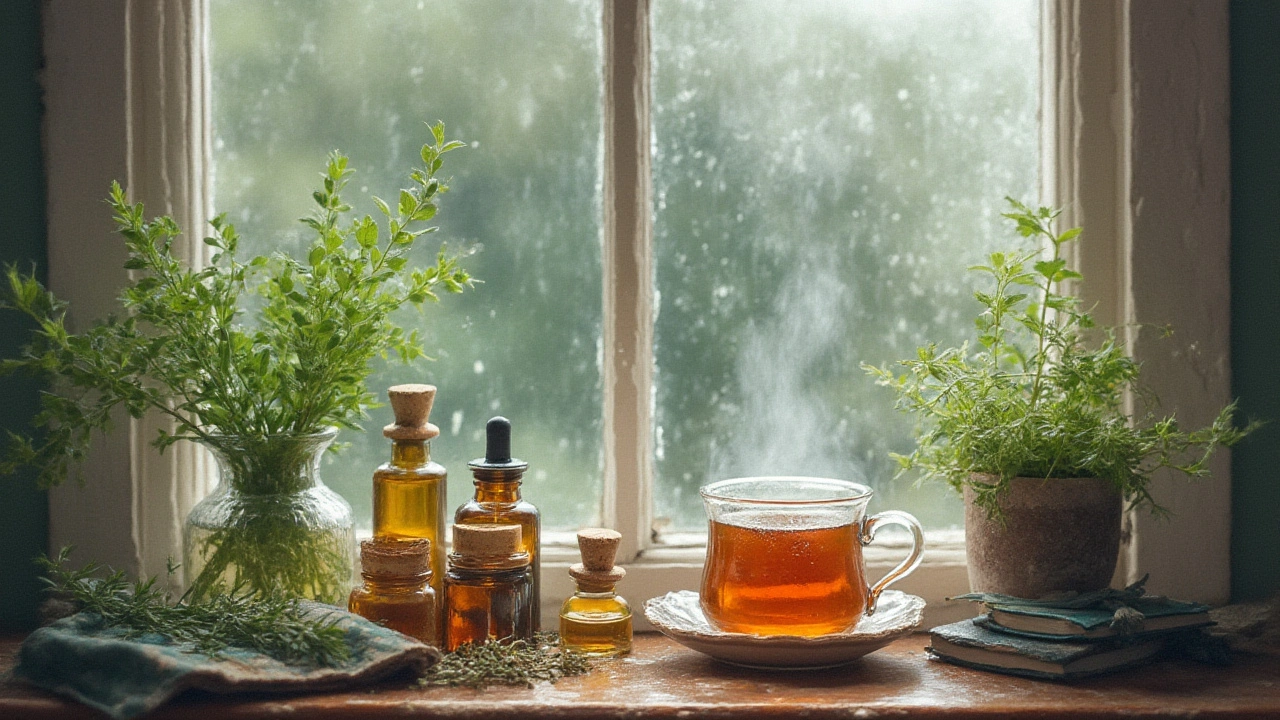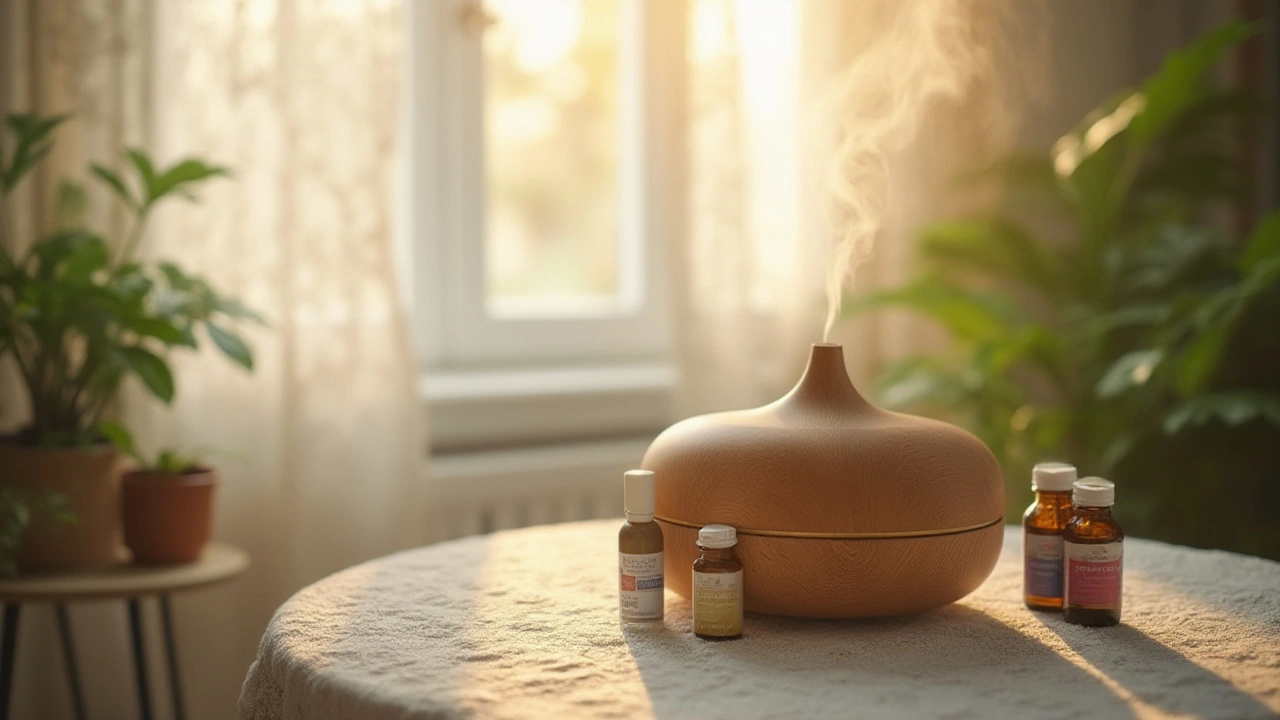Have you ever walked into a room filled with eucalyptus or peppermint and felt your breathing instantly become easier? The ancient practice of aromatherapy has been making waves far beyond the spa. Right now, there’s growing buzz about how essential oils can actually help us breathe deeper, especially as more people seek natural ways to support their lungs. Respiratory complaints are everywhere, whether you’re dodging city smog, coping with allergies, or just fighting that post-holiday cold. The cool part: certain fragrant plants can ease congestion, calm irritation, and even cut down on your stress—without reaching for yet another pill. Let’s unpack what really works, why your nose actually matters, and how to do this safely in your own home.
How Aromatherapy Affects the Breath
Breathe in, breathe out—sounds easy, until a stuffy nose or irritation makes every inhale a struggle. But what’s going on when aromatic oils enter the picture? Turns out, the nose does more than sniff out dinner; it’s the gateway to your lungs and a direct line to your brain. The olfactory system can trigger instant reactions in the body, including dilating the airways or calming a pesky cough. Clinical research points out that inhaling specific essential oils leads to measurable effects: eucalyptus, for example, has cineole, a compound proven to thin mucus and make it easier to cough up. This isn’t just folklore. Take a 2023 study from France, where patients with chronic bronchitis added eucalyptus inhalation to their daily routine and saw improved airway clarity after a week.
Lavender relaxes airway muscles, which comes in handy during stress-induced tightness (panic attacks, anyone?). Peppermint, favored by athletes, contains menthol, a natural decongestant. A 2022 review published in the "Journal of Respiratory Care" lists peppermint oil as a mild bronchodilator, meaning it can temporarily widen cramped airways and boost breathing comfort. Often, the simple act of deep inhalation (part of aromatherapy) gets overlooked—when you breathe more slowly and deeply, oxygen levels rise, your body relaxes, and inflammation may subside.
It’s not just about science—the ritual counts too. Using aromas in your daily routine can act like a gentle nudge to slow down, which helps your immune and nervous systems chill out. It’s why people with asthma or chronic congestion often add a few drops of oil to their humidifiers or hot showers. No wonder doctors in Australia recently began recommending aromatherapy blends as part of holistic care for mild respiratory issues. If it helps hospitals, maybe it makes sense for your bathroom too.
Best Essential Oils for Supporting Lungs
Shopping for oils can make your head spin; the labels all scream “clears sinuses!” or “supports immunity!” but they aren’t all created equal. If you’re after good lung support, there are certain MVPs to reach for.
- Eucalyptus: Contains eucalyptol (cineole), which loosens phlegm and helps you cough it up more easily. Studies from Germany’s University of Freiburg show it can reduce cough attacks in bronchitis sufferers.
- Peppermint: This oil’s menthol content offers a quick cooling sensation and dries up stuffy airways. A research group in Japan found peppermint oil inhalation improved breathing rates in people with mild congestion by up to 15%.
- Tea Tree: Antimicrobial and antiviral. Tea tree oil fights airborne nasties, which could mean fewer infections. Some small studies hint it helps reduce symptoms of sinusitis.
- Lavender: Not just a relaxer for your mood—its anti-inflammatory effects can lessen airway spasms and soothe the nervous system.
- Pine and Rosemary: These two woods are natural expectorants. They encourage the expulsion of gunk from your lungs, especially if you’ve got a stubborn cough that won’t quit.
Keep in mind, quality matters. Pure, undiluted oils are the real deal, while fragrance oils won’t give you the health benefits you want. Always buy from a reputable source, check the Latin name (like Eucalyptus globulus), and steer clear of anything labeled “perfume oil.” If the scent isn’t strong and fresh, it’s not going to deliver results. Stick with a classic blend—like eucalyptus-lavender before bed, or peppermint-rosemary when you need an energy kick. Blending these can even ramp up the positive effects; a South Korean study showed people exposed to combined essential oils had improved lung function compared to those inhaling a single oil alone.

How to Use Aromatherapy for Respiratory Relief
Let’s talk about getting the most out of each bottle. You don’t need fancy gear; even a mug of hot water or a bowl does the trick. Start by adding 2-3 drops of your preferred oil (never more at first) to a bowl of steaming water, lean over with a towel tented over your head, and inhale the vapor for 5-10 minutes. That’s the classic steam inhalation.
If you’re short on time, use a diffuser—these devices send a fine mist of oil and water into the air, perfect for bedrooms or offices. Portable inhalers (think Vicks-style sticks but refillable) are great for work or travel. Just don’t apply undiluted oils directly to your skin. Mix a couple drops with a carrier oil, like coconut or sweet almond, if you want to rub some on your chest or throat.
Here’s a quick guide for daily use:
- Morning boost: Add peppermint or eucalyptus oil to your shower, or inhale before starting your day.
- Desk diffuser: A few drops of pine or rosemary oil help keep you alert (and breathing freely) during afternoon slumps.
- Evening relaxation: Slip lavender or tea tree oil into your diffuser before bed to promote restful breathing all night.
And don’t forget—aromatherapy works as part of a bigger plan. Keep your house ventilated, stay hydrated, and keep tabs on humidity. Too-dry or too-damp air can make even the best oil less effective. For allergy or asthma sufferers, make sure you’re not sensitive to specific oils. Test a small amount first, or talk to your doctor if you’re on medication.
Science or Placebo? Unpacking the Research
Some folks still wonder—is this really science, or just the placebo effect? Here’s where things get interesting. The big guns—like the NIH and the World Health Organization—don’t call essential oils “medicine.” But they do acknowledge there’s evidence behind certain natural compounds.
Look at this comparison:
| Aromatherapy Study | Key Finding |
|---|---|
| 2023, France | Eucalyptus oil inhalation reduced cough frequency in bronchitis patients by 40% in 7 days. |
| 2022, Japan | Peppermint oil inhalation improved respiratory comfort in mildly congested adults by 15%. |
| 2021, South Korea | Blended oils (eucalyptus, pine, rosemary) improved lung function compared to control. |
| 2020, UK | Lavender aromatherapy lowered airway sensitivity and anxiety in asthma patients. |
The takeaway? While essential oils won’t “cure” chronic respiratory diseases, they’re legit helpers for mild to moderate complaints. Most of their magic comes from reducing inflammation, loosening mucus, and calming nerves—all with very few side effects when used safely. One caveat: essential oils shouldn’t replace inhalers or prescribed meds for serious lung conditions. Always check with your healthcare provider.
Still, if a five-minute steam break makes you feel lighter, it’s worth it. Users rave about better sleep, less nighttime coughing, and heightened relaxation. The psychosomatic benefits—like feeling in control of your health—add real value, too. Aromatherapy isn’t magic, but it doesn’t need to be; it’s simply a tool to help you catch your breath—sometimes literally.

Practical Tips and Safety Pointers
The fun part about aromatherapy? Nearly anyone can try it, as long as you use common sense. But the world of essential oils has its own safety rules. For starters, always dilute oils before putting them on your skin, especially the stronger types (eucalyptus, peppermint, pine). Kids under 10, pregnant women, and anyone with allergies should stick with milder oils and smaller amounts. Never ingest essential oils.
Store your bottles in a cool, dark spot with the lids tightly closed. Oils can oxidize or lose potency if exposed to sun or air. If you notice a change in smell or color, toss the bottle—expired oil won’t help your lungs and may irritate them. Have pets? Some oils (like tea tree and eucalyptus) aren’t safe for cats or dogs, so keep diffusers up high and check with your vet.
When it comes to maximizing the effects, start slow. One drop of oil goes a long way. Add more only if you tolerate it well. If you’re aiming to clear congestion during cold or allergy season, use a daily steam session for up to a week, then take a break. For general lung support, regular diffusing (one hour at a time, max three sessions per day) keeps things simple and safe. Remember, less is usually more in the aroma world—the goal is gentle support, not sensory overload.
And don’t underestimate the ritual—people often build entire bedtime routines around their nightly diffuser. Pair it with a warm cup of herbal tea or a few mindful breaths. The act of tuning into your senses can work wonders for stress, which in turn often helps with chronic respiratory complaints.
Thousands are turning to aromatherapy as a natural partner for breathing easy. Whether you’re just trying to survive allergy season or hoping to quit your late-night cough, this ancient tradition could be the missing piece. Got a favorite scent or a blend that knocks out your stuffy nose? Drop it into your diffuser and let your body—and your lungs—tell you what works.






